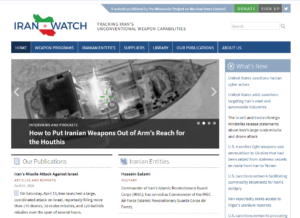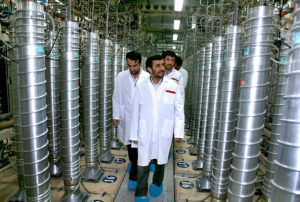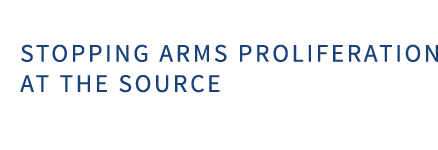A website that monitors Iran’s nuclear and missile programs, the entities contributing to those programs, and international efforts to impede Iran’s progress.

The purpose of Iran Watch is to increase public awareness of the strategic situation in Iran and to make detailed knowledge of Iran’s weapon potential available to policymakers, the media, scholars, and the public. Iran Watch provides analysis of sanctions policy and supports sanctions implementation and enforcement by publishing specific information on Iranian entities linked to proliferation and their foreign suppliers. The site is also a research resource with thousands of primary source documents about the Iranian proliferation threat and the world’s response. Iran Watch is supported by grants from private foundations.
History and Impact
The Wisconsin Project began building Iran Watch in 2003, when Iran’s nuclear violations were first publicly reported by the International Atomic Energy Agency (IAEA). At that time, it was revealed that Iran was building a uranium enrichment plant at Natanz using illicitly acquired gas centrifuges and had conducted secret experiments to enrich uranium. It was further revealed that Iran was building heavy water facilities at Arak, which could one day provide Tehran with a source of plutonium, and that Iran had secretly separated small amounts of plutonium. Following these revelations, the IAEA led efforts to uncover the scope of Iran’s past violations and its nuclear intentions. Disputes between the Agency and Iran sent the issue to the U.N. Security Council in 2006 and led to an increasingly stringent set of sanctions at the international and national levels.
 Iran Watch tracked and analyzed these developments. Through a number of op-eds and articles, the Wisconsin Project argued against Iran’s need to produce enriched uranium and warned about the proliferation risks inherent in such work. The Project also contributed to the expanding sanctions effort by providing governments and companies with the names of entities in Iran contributing to the nuclear and missile programs. When sanctions broadened beginning in 2010, targeting the Iranian economy as a whole, the Project was instrumental in ensuring that the Islamic Republic of Iran Shipping Lines (IRISL) was properly targeted, identifying front companies and new owners for IRISL’s fleet.
Iran Watch tracked and analyzed these developments. Through a number of op-eds and articles, the Wisconsin Project argued against Iran’s need to produce enriched uranium and warned about the proliferation risks inherent in such work. The Project also contributed to the expanding sanctions effort by providing governments and companies with the names of entities in Iran contributing to the nuclear and missile programs. When sanctions broadened beginning in 2010, targeting the Iranian economy as a whole, the Project was instrumental in ensuring that the Islamic Republic of Iran Shipping Lines (IRISL) was properly targeted, identifying front companies and new owners for IRISL’s fleet.
The 2015 Joint Comprehensive Plan of Action (JCPOA), the nuclear agreement between the P5+1 group of countries and Iran, shifted the world’s focus. Through Iran Watch, the Wisconsin Project tracked this shift, assessing the progress of nuclear negotiations and warning about problems with the emerging deal. When the JCPOA took effect in January 2016, Iran Watch prioritized issues related to implementation, including: transparency questions, nuclear inspections, licit and illicit procurement, and the remaining missile and military sanctions.
After the U.S. withdrawal from the deal in 2018, Iran Watch closely followed the re-imposition of sanctions and Iran’s response, including its deployment of more advanced centrifuges and its growing stockpile of enriched uranium. Since then, the site has also expanded its coverage of Iran’s missile and drone programs and its transfers of drones and missiles to other countries and non-state actors.
What’s on Iran Watch?
- Analysis by the Wisconsin Project, including policy briefs, research reports, op-eds, roundtable findings, and podcast interviews
- Open-source profiles of hundreds of proliferation-linked Iranian entities and their suppliers
- Background essays and chronologies tracing the development of Iran’s nuclear, chemical, and missile programs
- A library of materials about Iran drawn from public and private sources that contains some 10,000 documents
- A monthly newsletter that updates subscribers on developments related to Iran’s proliferation programs and related sanctions and diplomacy
Iran Watch Contributors
The Editor and principal investigator for Iran Watch is Valerie Lincy, who is the Wisconsin Project’s Executive Director. Ms. Lincy created the website in 2003 and has overseen it since then.
John Krzyzaniak, a Research Associate at the Wisconsin Project, and John Caves, a Senior Research Associate, are the primary contributors to Iran Watch and are responsible for updating the site. Additional contributors include Research Associate Austin Bodetti.
The site has benefited from the contributions of past researchers, including Simon Chin, Ashley Curtis, Abby Eineman, Jerrica Goodson, Simon Mairson, Mana Mostatabi, and Warren Marshall.

